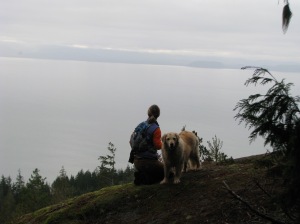We’ve completed another #tiegrad term and grown even closer as a cohort of connected educators. We were lucky enough to be learning with Alec Couros this term and he brought with him an outstanding collection of guests. He concluded this term with a touching reconnection to the big ideas of connecting, sharing, learning and relationships. He reminded us that it is not about the tools, but instead about learning. However, we must always be mindful of the influence of our tools.
My big takeaways from this course are:
- Be a part of the conversation. Hearing Dean Shareski speak to US brought the point emphatically home: there is a moral imperative to share our learning and teaching. You don’t need to judge yourself too harshly and censor yourself before you begin, you can grow and find your voice and your people.
- Ask questions and reach out.
- It is way more fun to work together. Get into the global staff room and have a coffee together. We do that in #tiegrad – we organize our own coffee chats and morning get-togethers. We pair up, group up, and work together well.
- Identity matters. We need to consider our own online identity and help our students develop an identity for themselves.
Areas of strength for me as a connected educator are connecting behind the scenes, joining in on Twitter chats, collaborating and working with others, and contributing on backchannels. Most of my areas of weakness center around my insecurities about sharing my voice and opinion. I’m hesitant to disagree, to rock the “global” boat, and to share my simple ideas. I still hesitate to post every blog or tweet, I have piles of drafts on both sites. Sharing my blog publicly causes me anxiety, because I feel a little safer to be myself, have fun and be a little ridiculous here – believing that no one will read much past the first paragraph… right???
Two goals as I go forward are:
- Dean Shareski’s challenge: “Can I find your best work online?” You can find my students’ best work online. They proudly tweet from our class Twitter account and their individual blogs. I share my work and learning, but I don’t think that my best stuff is online yet. Sometimes I haven’t realized that there is value in my work until it gets a response on Twitter! I need to be a little more transparent, or at least celebrate some of my efforts in the classroom. There are things that I am proud of, and it might be worthwhile to share them out.
- Rethink my metaphor, a challenge by Alec Couros. I have always seen myself as an amplifier of some sort. I’ve called myself a megaphone, a soapbox, etc, with the vision of being a platform of some sort to raise my students’ voices/works/ideas/creations/energies/etc and help them to find their audience and people.
Inspired by Alec’s sweet goodbye “Don’t forget about me… I will always be your co-learner/collaborator” – sticking the Simple Minds lyrics in most of our minds… I’d like to end with:
We found out that each one of us is a learner, a fitbit all-star, a ukulele rockstar, and a tweeter, a blogger, and part of a family that will extend beyond our #tiegrad years together. We were glad to have you join us, don’t forget us!
Sincerely yours, the #tiegrad cohort (your co-learners, collaborators and co-conspirators)
(oh, we should remix this one for our cohort! Challenge extended…)


